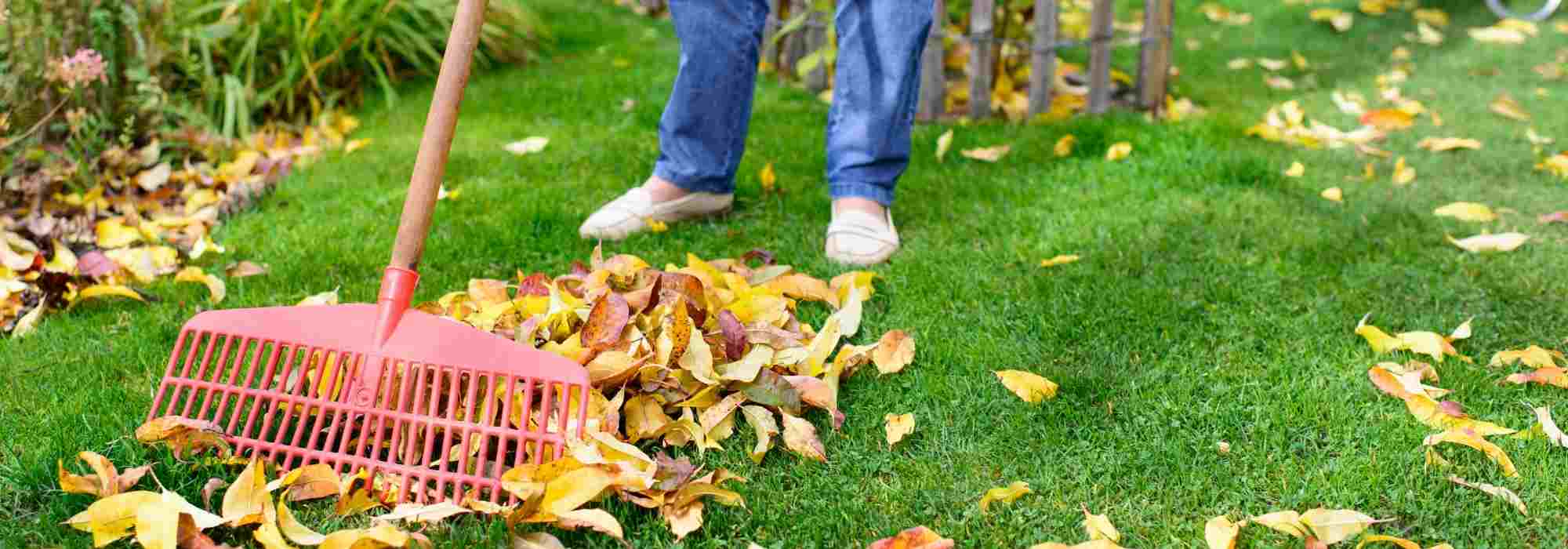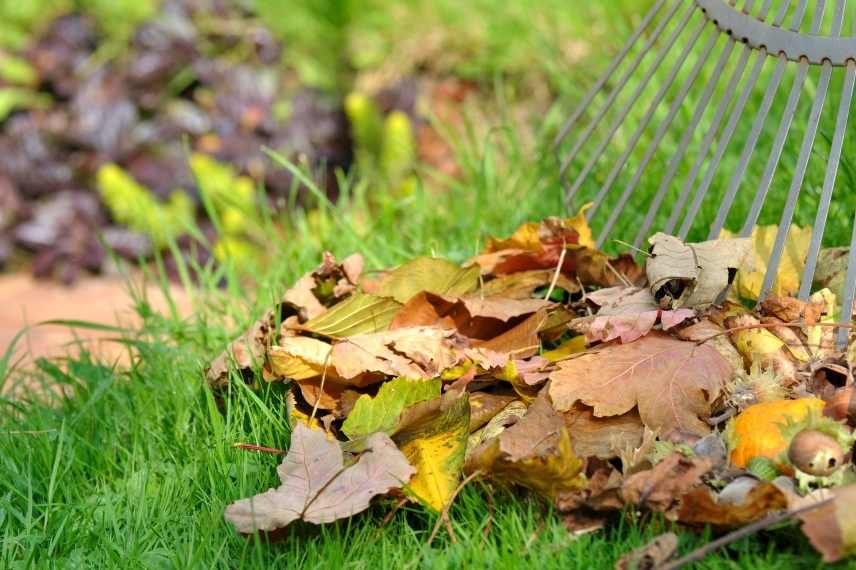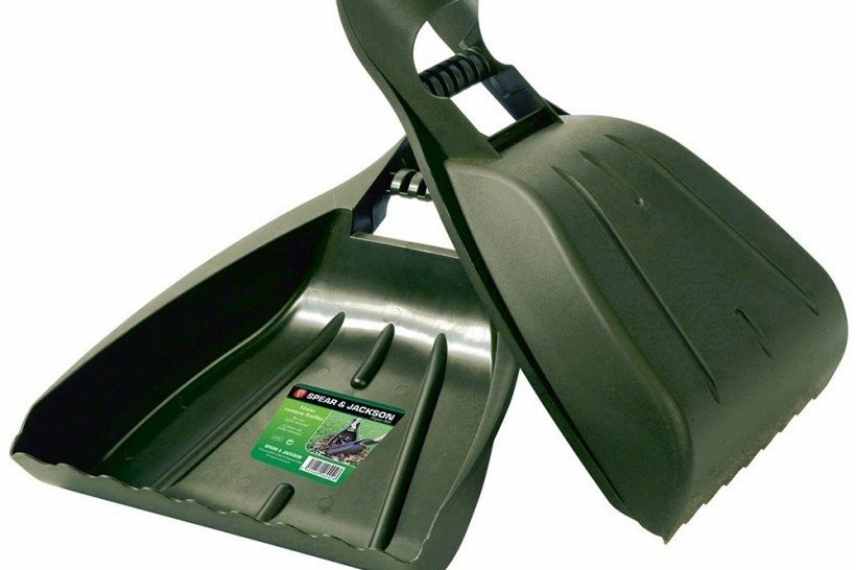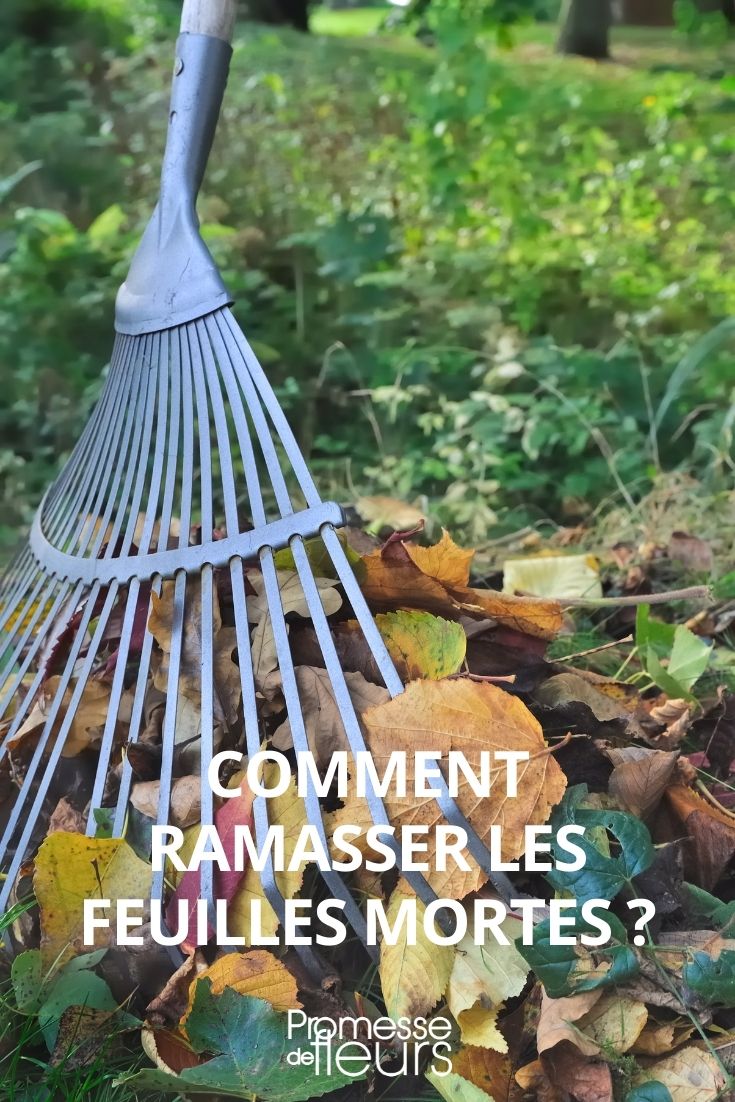
How to collect fallen leaves?
The falling leaves drift by the window...
Contents
Yay, it’s autumn! It’s the season for mushrooms and the deer rut, but… it’s also the season for fallen leaves. And autumn leaves, once on the ground, must be collected if you want to avoid damaging your lawn or simply slipping on them. This is part of the autumn gardening tasks. But, by the way, how are we going to collect all these fallen leaves? And is it really a good idea to collect them all? We’ll tell you all about it in our advice sheet.

The time for collecting leaves in the garden comes around quickly!
Why collecting fallen leaves?
Aside from the fact that, for some gardeners, meticulous and concerned about the perfect aesthetics of their garden, leaving dead leaves on the ground “doesn’t look tidy“, there are several good reasons to collect the leaves.
Dead leaves must be collected from lawns. Indeed, the accumulation of leaves on the lawn will deprive it of oxygen and light. The grass will turn yellow, and in more severe cases, die, leaving unsightly patches in the lawn. It is also important to avoid leaving a thick layer in flower beds and perennial borders for the same reason: dead leaves may smother young plants or small perennials.
The second reason for collecting dead leaves is to clean pathways, courtyards, paving, sidewalks… Firstly because it can be slippery. But also because the degradation of leaves on paving stones or slabs will create a sort of compost that will serve as a substrate for mosses and pioneering plants. In other words, if you forget to remove the leaves in autumn from a path, you may find yourself playing the amateur archaeologist to excavate your old path. And this phenomenon can happen quite quickly…
Let’s not forget that dead leaves can clog ducts and water drains, accumulate in gutters… In short, in certain areas, dead leaves can be problematic.
 Too many leaves on a lawn damage it, and on hard surfaces, they are not safe…
Too many leaves on a lawn damage it, and on hard surfaces, they are not safe…
Should we always collect dead leaves in the garden?
No! The shedding of leaves is a completely natural phenomenon. And dead leaves contribute to a good balance of the soil by breaking down into nutrients and humus. Therefore, under trees or shrubs (especially in hedges), you can leave the dead leaves. Before decomposing, the dead leaves will provide protection against the cold, also serving as shelter for a host of beneficial insects, as well as for hedgehogs, shrews… In short, collecting leaves is a real chore, but it can (or should) be avoided in a large part of the garden.
Read also
How to make good leaf mould? - tutorialHow to collect fallen leaves?
Several solutions are available to you:
Manual and silent solutions
- Lawn rake: Be careful to choose the right leaf rake depending on where you are collecting your leaves! Prefer the soft-tined steel rake (like this narrow Burgon & Ball rake) for gathering dead leaves on gravelled, paved, or tiled surfaces, as it allows you to collect without damaging the surfaces. The plastic-tined rake, on the other hand, is suitable for collecting dead leaves in autumn and winter on damp and fragile lawns. Softer than the steel-tined rake, it allows for delicate work on more fragile surfaces without causing damage. The Ergo ‘Wide Spear & Jackson lawn rake is a good example. For smaller areas, there are small leaf rakes, like this cute small flat rake with a short handle from Burgon & Ball: they are ideal for collecting dead leaves between perennials in flower beds.
 The traditional lawn rake
The traditional lawn rake
- Leaf grabber hands: if your hands are too small to effectively collect dead leaves, Spear & Jackson has thought of you. This pair of leaf grabbers from Spear & Jackson, consisting of two rigid scoops with handles, act as an extension of your hands capable of gathering handfuls of plant waste like dead leaves. You just need to put all these leaves into a wheelbarrow or a bag;
 Leaf grabber hands ‘Spear and Jackson’
Leaf grabber hands ‘Spear and Jackson’
- Leaf grabber with handle: an evolution of the pair of hands, the leaf grabber with handle allows you to collect dead leaves without bending down. This tool, here the Spear & Jackson leaf grabber, works like a giant pair of tongs, with two handles articulated like a pair of scissors. Each “hand” in plastic has small teeth along the edge that are close enough to effectively catch dead leaves;
- Leaf collector broom: more eco-friendly and quieter than a leaf blower (see below), a push leaf collector broom allows for the collection of leaves over large areas. Essentially, it is just a large collection bin mounted on wheels and equipped with a rotating broom. You push this “leaf collector broom” in front of you while walking, and the dead leaves are collected and stored in the bag or collection bin.
Noisy machine: the leaf blower
A leaf blower (either petrol or battery-powered) can sometimes be useful in the garden. In particular, for very large areas or for more efficient cleaning, and paradoxically more delicately, the flower beds. Note that there are leaf blower-vacuums that suck up the leaves at the same time to store them in a bag. Unfortunately, the capacity of said bag is limited. Some more expensive blower-vacuums even come with a built-in shredder, which effectively reduces the volume of the sucked leaves.
 Noisy or silent leaf collection? It depends partly on the area and the surface
Noisy or silent leaf collection? It depends partly on the area and the surface
The “out of sight, out of mind” technique
If you have a lot of dead leaves on the lawn and want to work quickly and efficiently, you can opt for a simple lawn mower. Indeed, running the mower over the leaves will shred them. You can either use the mower in “mulching” mode and leave the small pieces of leaves on the ground to nourish it, or use the mower equipped with its collection bag. The latter technique allows for effective and quick collection of dead leaves without too much effort.
What to do with all these fallen leaves?
Once you have gathered all your leaves, do not take them to the tip or burn them! Use them!
- Make a leaf mould: by composting the fallen leaves in a wire-mesh bin open at the bottom. The leaves will decompose quickly under the action of fungi, bacteria, and soil microfauna.
- Feed the compost to balance the carbon-nitrogen ratio. Compost is often too nitrogen-rich, as most household waste (garden green waste and kitchen scraps) consists mainly of nitrogen (N). Fallen leaves, on the other hand, are very high in carbon. This carbon (C) contribution will help rebalance your compost heap;
- Use the fallen leaves: as mulch to protect certain plants from the cold or to cover bare vegetable beds during winter. A good layer of leaves about twenty centimetres high will be sufficient for effective mulching in the vegetable garden. Additionally, as they decompose, the fallen leaves will provide some nutrients and help improve soil structure. In this regard, fallen leaves can also be used in the preparation of new vegetable beds or new flower beds using the lasagne gardening technique;
- Play with children or fellow adults: land art, decoration, DIY, autumn mini-herbarium, or… simply jump into a pile of fallen leaves. There are plenty of autumn activities to enjoy outdoors. It’s a great way to make the most of the garden before the first frosts.
- Subscribe!
- Contents
































Comments